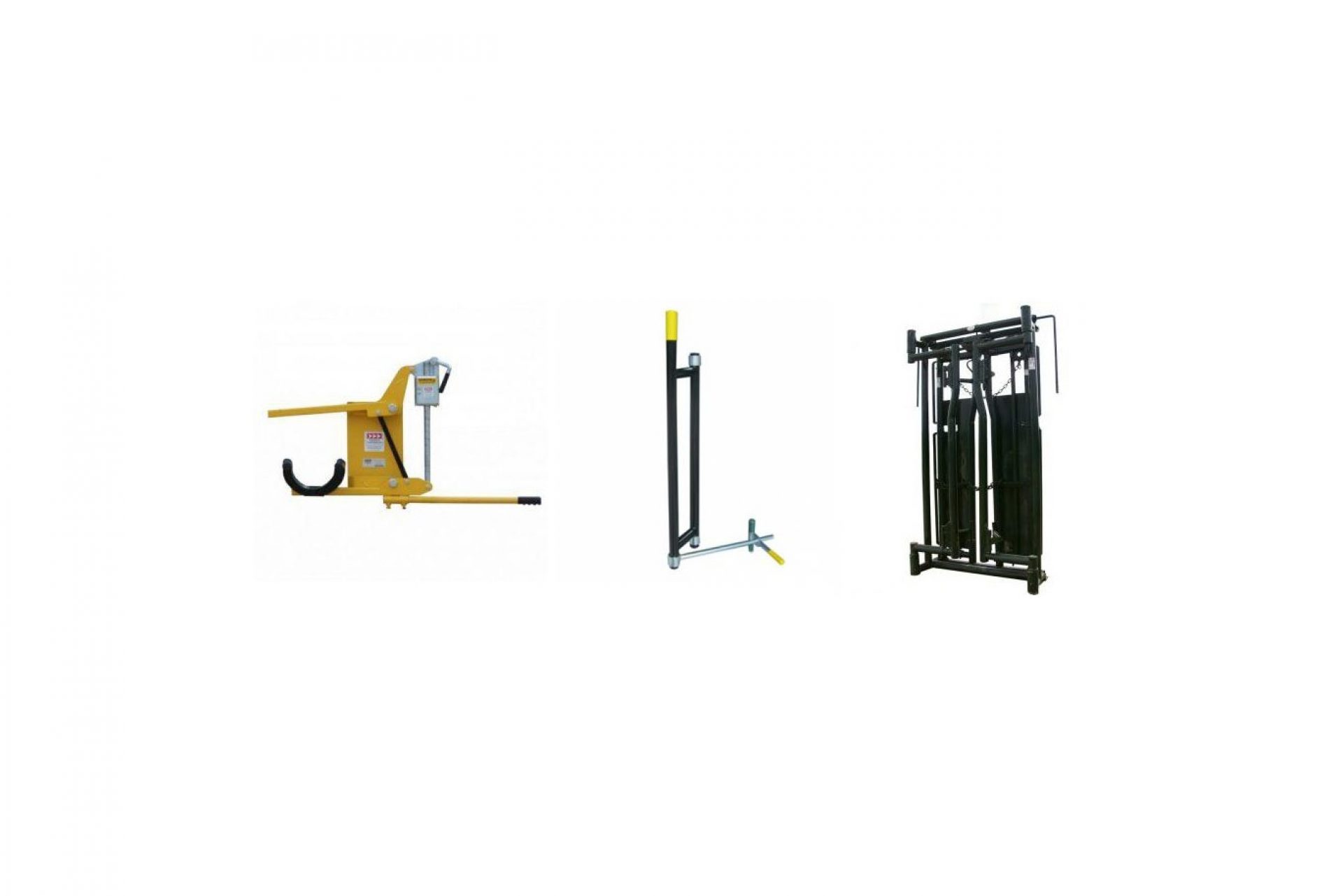How To Handle Cattle Safely - Cattle Head Restraint

When it comes to how to handle cattle and the different cattle handling equipment, decisions often come down to personal preference. But what if we told you there might be a better way? Let us give you some insight into how low stress cattle handling and equipment designed to work within those principles can improve your capital benefits and your farm.
Cattle Neck Extender
The aim of a neck extender is to reduce head movement and provide increased neck access. When adhering to animal science and low stress handling practices, the neck extender does not fit into these principles. According to farming researchers, there are many issues that come with a neck extender. Interestingly, while the intention of the neck extender is to provide more neck access, many say that the neck extender gets in their way. The neck extender bars position the animal forward and get in the way the access they need.
A neck extender has an elevated risk of animal injury, such as crushing the cattle's jaw and potentially their eyes. Not only does it cause instant pain for the animal, but it causes more problems down the road. Unhappy, sore animals are more dangerous for the operator to be around and sore jaw cut feed consumption. These issues are not only harmful to your animals and yourself, but will affect your profitability.
Cattle Chute Head Sweep
A head sweep is a simple, gentle and effective way to hold the cattle's head in place with ease. A head sweep does not clamp the head like a head holder, it is a straight bar that forces the head to one side to calm the cattle down. Although it isn't the worst way handle the cattle, it isn't the most effective. The animal still has the chance of going down. So, if you're working on the animal and it becomes unsteady and goes down, it can be extremely dangerous for the cow and the operator, and an injured animal may cause in loss of the animal. Not thinking through the equipment you are using and making educated decisions may cost you or your farm.
A head holder is a sturdy mechanism that clamps around the animal's neck and holds the head immobile to allow the operator close-up access to the cattle with minimum stress, maximum safety, and ultimate efficiency. Unknown to many, the head holder is the most relaxing head immobilizer in the cattle handling industry. As soon as you clamp the cows head, it automatically feels relaxed, so it doesn't move around. Instead, the animal stays calm and ready for the operator to work on it. Safe for the operator, safe for the cattle. It's a smart and easy to use mechanism that makes both sides of the holder happy!
There is a scientific reason why man has been controlling large animals for thousands of years by holding the head with ropes, blocks of wood, etc. Arrowquip makes this so easy to do with the Q900 head holder. It is a commonly known fact that a cow calms if its head is up, rather than down.
Watch this video to see what difference it makes:
Head Sweep
- A Head Sweep is a straight bar that is mounted on the head gate of a hydraulic chute. This bar is powered by the hydraulics on the equipment, and gently sweeps the cow's head over to one side.
- One positive of a Head Sweep is that it is powered by the hydraulics on your equipment, so there is no manual work involved.
- One downside of a Head Sweep is that it does not prevent a cow from going down in the chute, and depending on the model of head gate it can be very dangerous for a cow to go down while they are secured in a head sweep. (Adding a Sternum Bar is helpful if your cattle are prone to going down in the chute!)
Neck Extenders
- Neck Extenders are two bars attached to the front of a head gate. These bars extend the cow's neck forward as they are caught in the head gate.
- A positive to neck extenders is it can help to catch cattle in the proper location.
- A negative point on neck extenders is that they cannot be used for cattle of varying sizes, as they may not be the proper size for calves.
Chains
- Chains are used as a low-cost head restraint by many manufacturers.
- No matter how they are arranged, chains do not provide adequate control of a cow's head to be considered a proper head restraint.
Ropes
- When chains are not available, ropes may be used in their place.
- As with chains, ropes do not provide enough control of a cow's head to be considered a true head restraint.
When choosing a head restraint, it is important to consider the handling tasks that you complete on a regular basis. A Head Restraint can be a huge benefit to your operation, or a major downfall. Taking the time to do your research will help you determine which type is right for your needs, so the next time you manage your cattle will be easier than ever before.
What type of head restraint do you prefer? Tell us in the comments!
About the Author

Dana Charban
As a small town girl from rural Manitoba, Dana Charban grew up around agriculture and farming her en...More Information on Dana Charban
Email Dana Charban:


Comments
Join the Discussion
Comments
this site is good